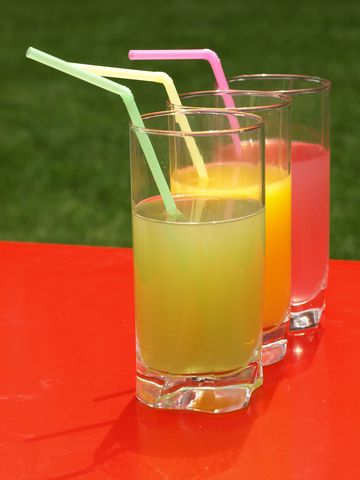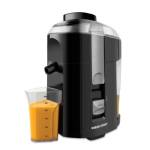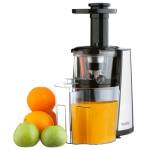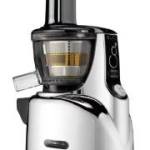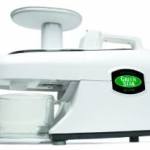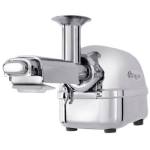It is a fact that we are becoming more and more concerned about what we put into our bodies, the more we get to know about health issues. We are what we eat (and drink!) and we know that cooking often damages nutrients and kills healthy enzymes. This is why healthy juicing recipes are all the rage these days.
However, eating raw fruit and vegetables is not always an appetizing prospect, which is one reason healthy juicing recipes are becoming so popular.
Do you really want to sit down and eat a handful of raw kale, 2 apples, a raw beet and 2 carrots, or would you prefer to whiz these ingredients up and make a nutrient-rich drink which tastes good? Yes, healthy juicing recipes are way more appealing.
Everyone has a different palate so if you prefer your juice sweet, semisweet or savory, or you have specific fruits or veggies you dislike, or whatever requirements you have, you can find the perfect healthy juicing recipes for you – those you love to make and drink.
Whether you are interested in juicing recipes for weight loss or you simply want to add more nutrients to your diet so you can look and feel great, read on for some great juicing tips.
Why Green Juice Recipes are So Popular
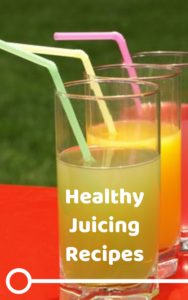
The first thing to say is that a green juice does not only include green vegetables (if it did, it probably wouldn’t taste very nice!)
You can include ginger, lemon, fruit, and other tasty ingredients to sweeten the juice and give it flavor. A green juice is green in color, but it does not only have to include green vegetables.
Enjoying green juice means you can get plenty of nutrients without having to eat green vegetables you don’t like. A glass of kiwi, apple and green grapes is going to be green, and that sounds nicer than a glass of juiced kale, although if you add the right ingredients to the kale, that is going to taste nice too! Hooray for healthy juicing recipes.
 Some Surprising Benefits of Green Juice
Some Surprising Benefits of Green Juice
Although all fruits and veggies are good for you, green ones contain chlorophyll which is ‘plant blood’. This substance is responsible for stimulating the photosynthesis process, which means using light to convert water and carbon dioxide into glucose, which is in turn used for energy.
Chlorophyll is nearly the same as hemoglobin, which is what our bodies use to transport oxygen through the blood, although hemoglobin has an iron central atom and chlorophyll has a magnesium one.
It is thought (but not proven) that chlorophyll can perform the same function as hemoglobin. Whether it does or not, chlorophyll also helps to replenish our red blood cells which increases the blood’s oxygen levels.
Chlorophyll also promotes weight loss, increases energy, enhances tissue regeneration and wound healing, protects DNA from carcinogen damage, decreases inflammation in pancreatitis and similar conditions, stabilizes blood sugar, improves mental clarity and skin problems, maintains an alkaline environment to inhibit disease, and extracts heavy metals like mercury from the blood. See why healthy juicing recipes are so popular?
It stops carcinogens attacking to DNA in organs thereby preventing cancer from developing, helps to break up calcium oxalate stones in the kidneys, and also decreases the appetite because of the compound thylakoid it contains. Whew, that is quite a list!
Why Juice Vegetables Instead of Cooking or Eating Them Whole?
Cooking lowers the chlorophyll content of food, which is why consuming it raw is better than consuming cooked vegetables to get it. Once vegetables change from bright green to dark green, as happens when they are cooked, there is barely any chlorophyll left in there.
You might wonder why not just eat them raw, but do you really want a bowl of dry, hard, raw vegetables? Add some salad dressing or sauce to make them palatable and you are adding fat and sugars you do not need. Making healthy juicing recipes is the obvious way to get a bunch of nutrients and health benefits quickly and easily, in a few sips.
Can You Make Juice Ahead and Store It?

Drinking juice you made 4 hours ago is still better for you than eating a caramel doughnut of course.
If you make juice ahead, store it in a dark-colored opaque container and fill it all the way up so it contains no air, or very little.
You can top it off with water if you do not have enough juice. A little lemon juice in there will help stop oxidization. Keep it in the refrigerator and drink it within 24 hours.
Fruits and Vegetables not to Juice
Can you just any fruit or vegetable? No, and you need to know which not to before you start making healthy juicing recipes. Soft produce like eggplant, bananas, olives, overripe peaches or melon, beans, peas, and avocados are fine in smoothies because they are nutritious and easy to blend, but they are not good for juicing.
Peaches and melons which are either ripe or hard are fine, just not the very soft ones. Anything very hard such as coconut or some types of squashes do not give much juice either and they are hard on your juicer. Orange, apple and lemon seeds can be bitter.

Herbs like cilantro or basil, and spices like chili peppers can add zip, while lemon or grapefruit juice can also improve the flavor of your healthy juicing recipes cocktails.
The 4-3-2-1 Juicing Rule
To keep the flavor good, many people use 4 parts of sweet juice (pineapple, grape or apple perhaps), 3 parts of grassy greens like lettuce, spinach, sprouts, or wheatgrass, 2 parts of tangy juice like lime, lemon or kiwi, and 1 part zesty or spicy juice such as cayenne pepper, mint leaves or fresh ginger. You can omit the sweet ingredient if you want to make savory healthy juicing recipes.
Juicing Recipes Book by Drew Canole, on Amazon
Reasons to Make Your Own Healthy Juicing Recipes
Not only does investing in a blender mean you can make whatever juices you want and save money on readymade ones, but commercially packaged juices are pasteurized, which means heating them to kill bacteria. This also kills a lot of nutrients and beneficial enzymes.
Some also contain added sugar and preservatives, and the fruit in there might have been treated with pesticides. Was it washed before being juiced? Well you would hope so but it isn’t a given. Juicing your own produce means you can choose what goes into the juice, wash the vegetables and fruit before juicing it, and experiment with all kinds of flavors and combinations.
Best Juicer for Healthy Juicing Recipes
There are six styles of juicer to choose from – centrifugal (the most common one), masticating, upright masticating, hydraulic press, wheatgrass, and twin gear which is also known as triturating. Knowing a little about juicers before buying the first one you see ensures you can make a good choice. Your healthy juicing recipes will be better if your juicer is a reliable, efficient model.
 Centrifugal Juicers
Centrifugal Juicers
The cheapest option for healthy juicing recipes fans is a centrifugal juicer and that is the kind you will find in most department stores. These shred the produce then use centrifugal force to spin the pulp against a strainer very fast. You will end up with juice but more waste in the form of wet pulp than with a more expensive kind. A centrifugal juicer is quick and economical, and the best choice if you are brand new to juicing and want to see if you get on with it before investing in another type of juicer.
Black and Decker Juicer, on Amazon
 Masticating Juicers
Masticating Juicers
Masticating juicers ‘chew’ the food hence the name, using a single gear or auger before separating the juice. This gives you more fiber, enzymes and nutrients from the pulp than a centrifugal juicer would yield. This type is great for grasses and leafy greens, if you include those in your healthy juicing recipes. A lot of models homogenize the juices so you can use them for making sauces, nut butters, ice cream, and baby food. If you are looking for something that is versatile, or something that can do the job of a food processor and juicer, this machine might be worth considering. A masticating juicer is more expensive, bigger and noisier than a centrifugal one. It is also slower. But if you want a lot more juice then it’s worth considering along with the others. You get more juice when you make healthy juicing recipes if you choose such a model.
VonShef Masticating Juicer, on Amazon
 Upright Masticating Juicers
Upright Masticating Juicers
An upright masticating juicer is designed to operate upright thereby saving space. If you want to get a masticating juicer because you juice a lot but you are short on kitchen countertop space, this might be the perfect type of juicer for you. First the juice is squeezed out and then the pulp is crushed before being re-pressed to get every last bit of juice out. This double-pressing means the machine yields more juice and less waste than a regular masticating one, and they can juice just about everything. They are a little noisier and cost a bit more though, so unless you juice every day and want to get the most juice possible out of everything you put in there, you might want to consider a more economical model.
Silent Upright Masticating Juicer, on Amazon
 Triturating (Twin Gear) Juicers
Triturating (Twin Gear) Juicers
A twin gear, or triturating, juicer works in a similar way to masticating juicers but it will squeeze the pulp between a pair of interlocking gears. This makes wonderful healthy juicing recipes. These juicers are slow and powerful, cracking the nutrients right out of the cells. You will get more juice and also more nutrients in your juice. There is barely any waste and this machine can juice leaves and grass, and can make ice cream, sorbet, pasta, nut butter, and baby food. If you can afford the price tag, this is a phenomenal machine.
Triturating Juicer, on Amazon
 Hydraulic Press (Norwalk) Juicers
Hydraulic Press (Norwalk) Juicers
These are the most efficient type because they simply press out the juice rather than grinding or chewing. There is hardly any waste making them ideal for professional applications and businesses. There is no air forced into the juice (so no oxidization) nor any heat produced. These cost a lot of money though and take up a lot of room, so unless you have a business producing juice or you drink a heck of a lot of juice, you might wish to consider a cheaper one.
Norwalk Juicer, on Amazon
Wheatgrass Juicers for Healthy Juicing Recipes
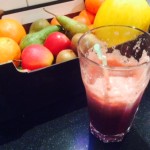
A lot of people start out with a centrifugal juicer (I did!) and these are pretty good. You can pop any ingredients you want in there, squeeze out the juice at the touch of a button, and you can put the parts in the dishwasher for easy cleanup.
If you find you’re using the machine on a daily basis, you might like to upgrade to a masticating juicer or something else. A good juicer will last for years but if you have juice every day you will want a machine that squeezes the maximum juice and nutrients out of your fruit and vegetables. This ensures you get the most flavor and nutritional content from your healthy juicing recipes.
